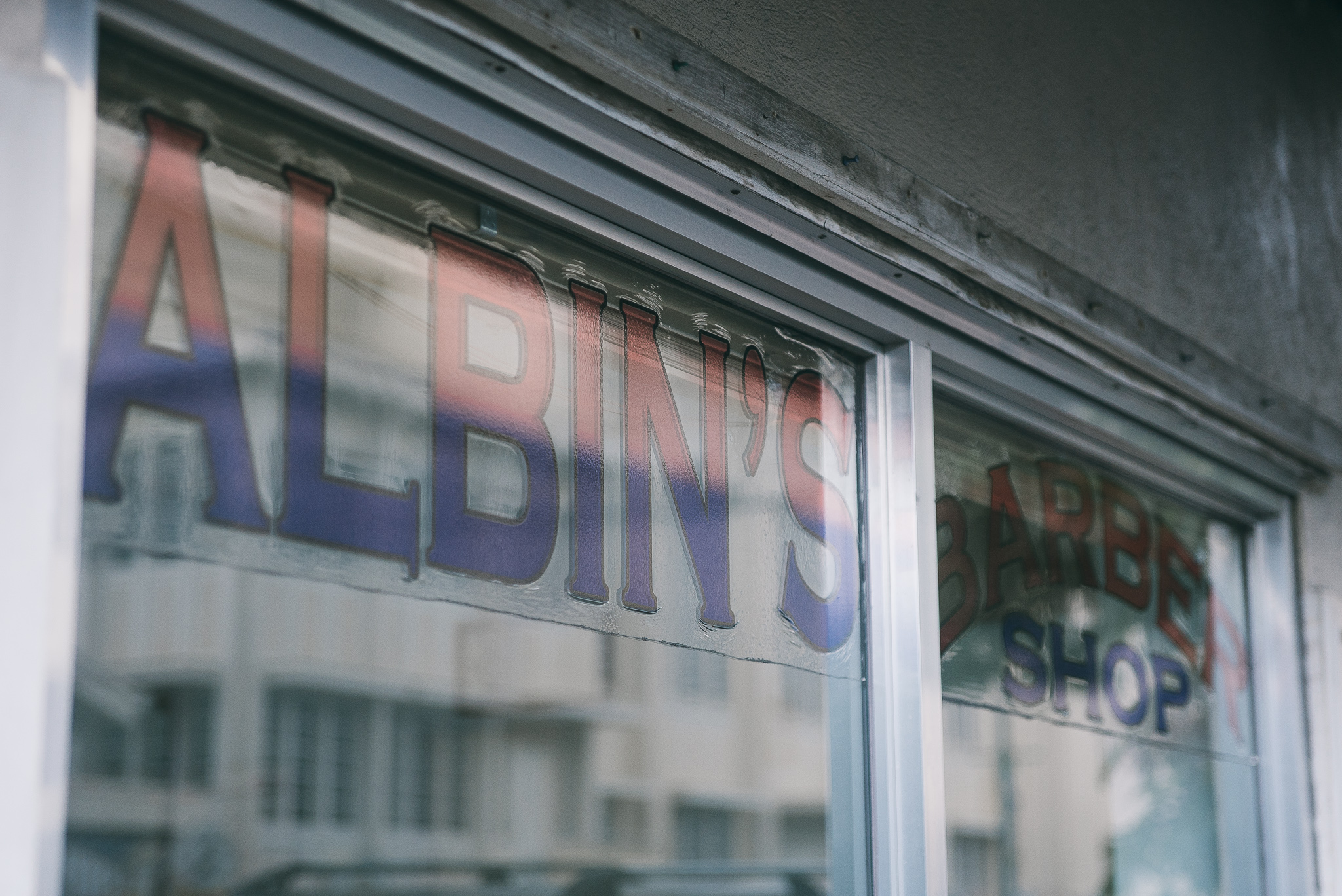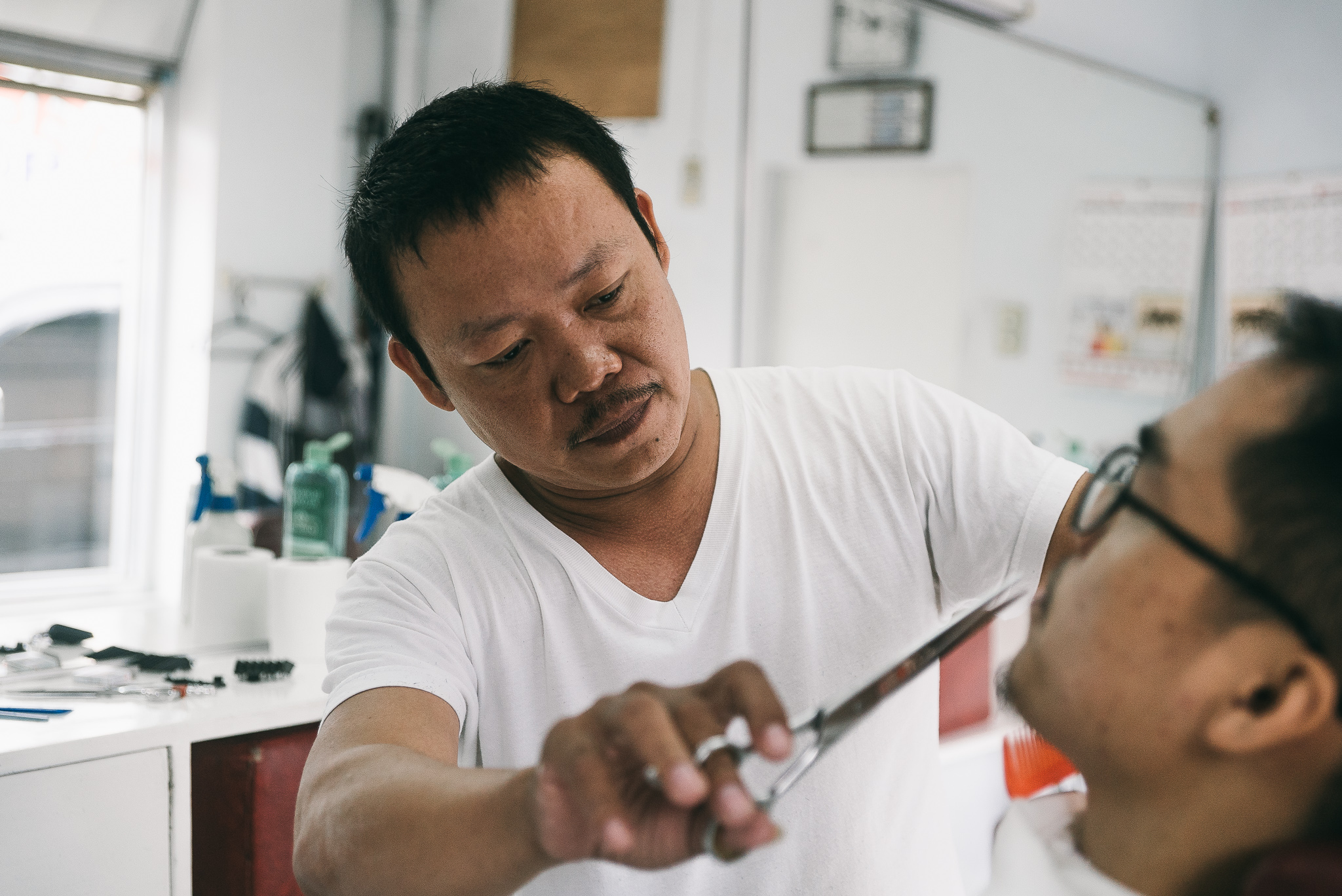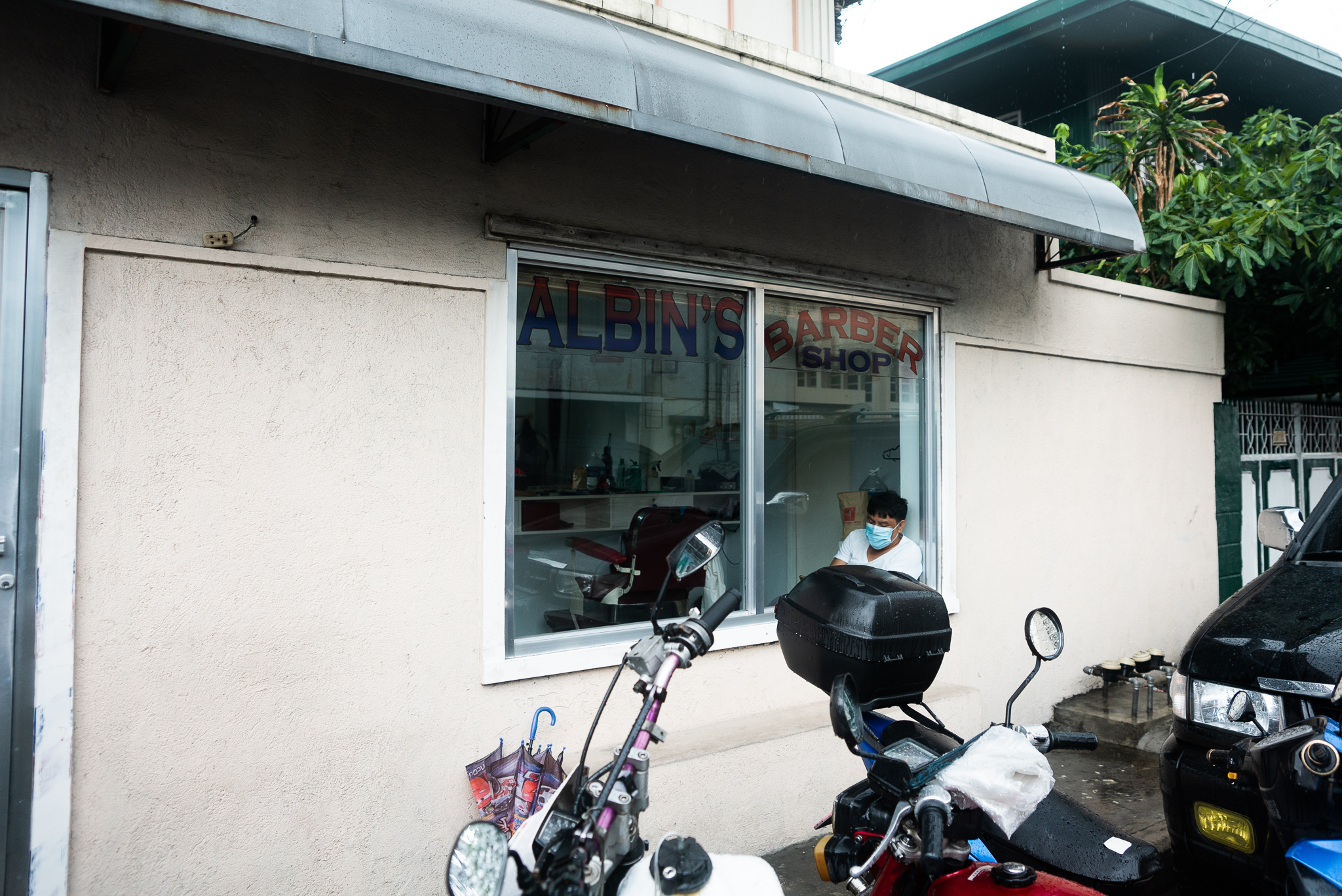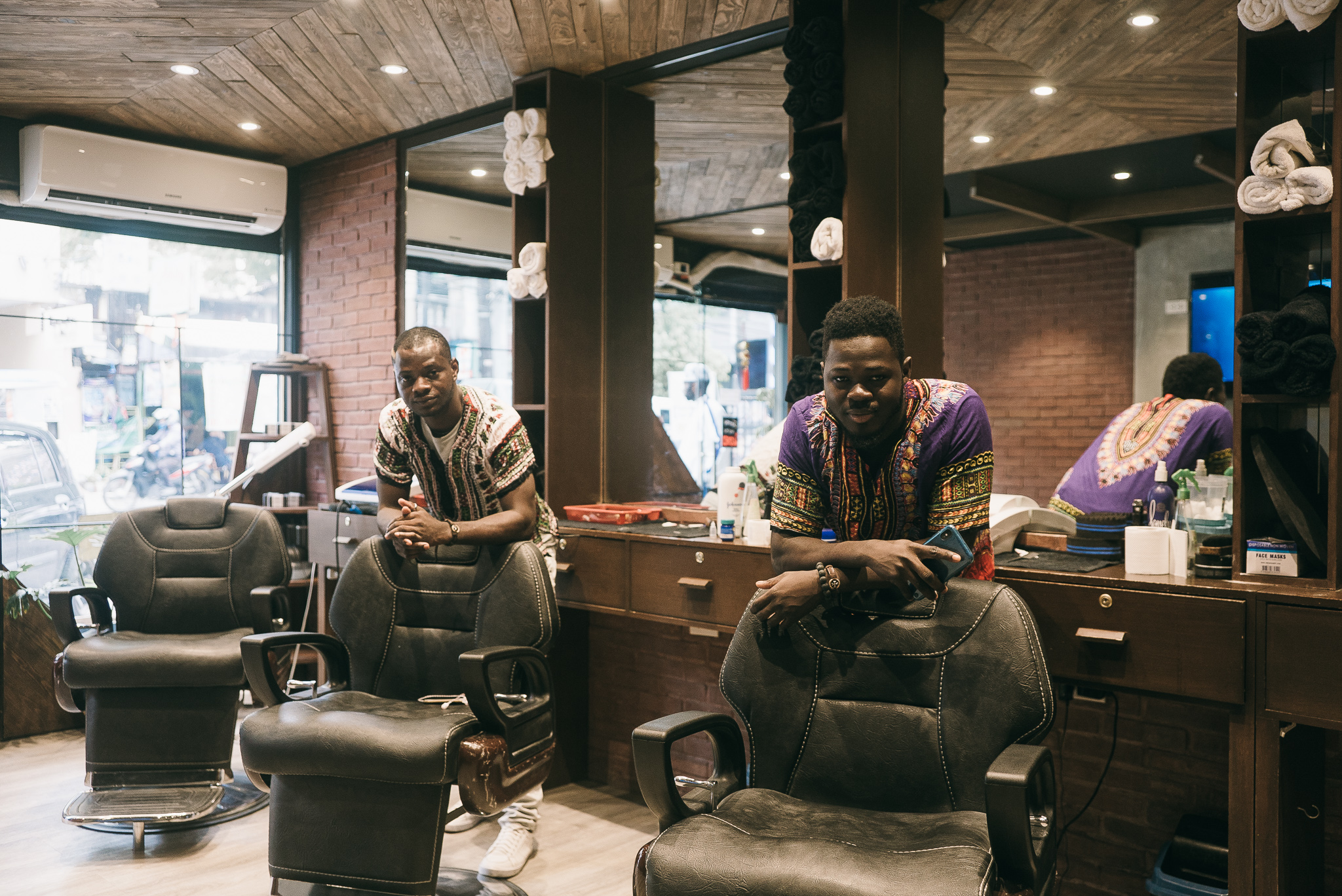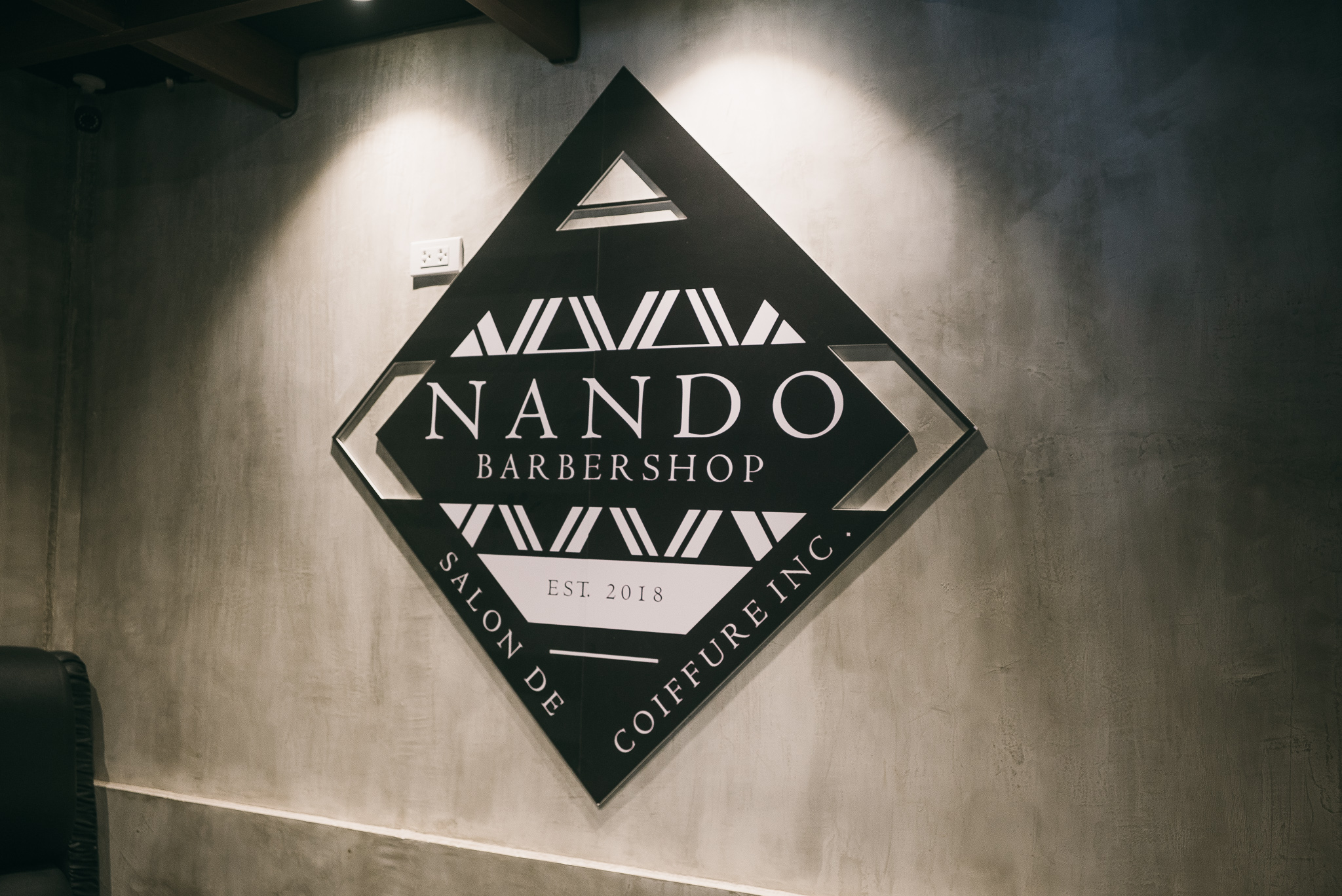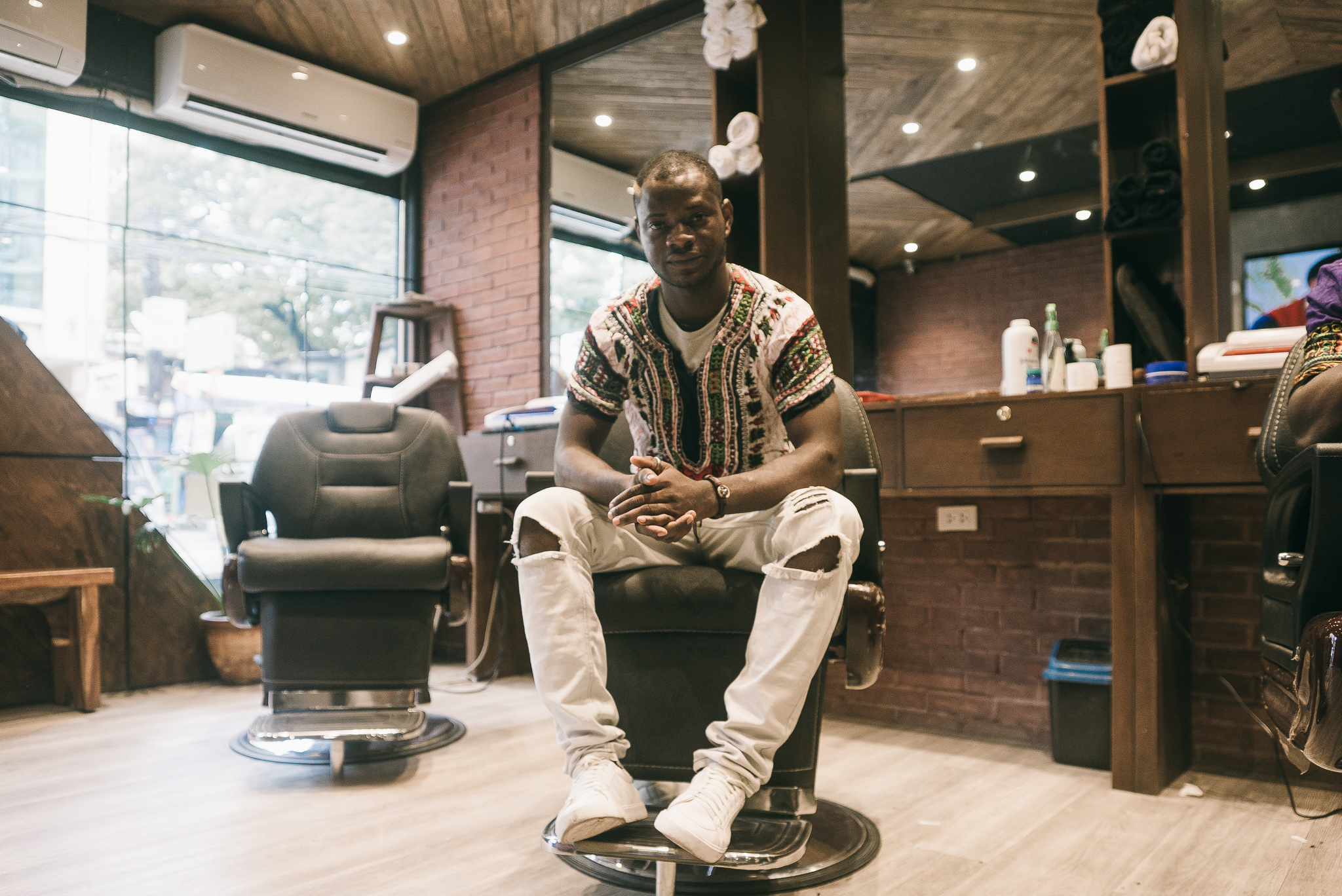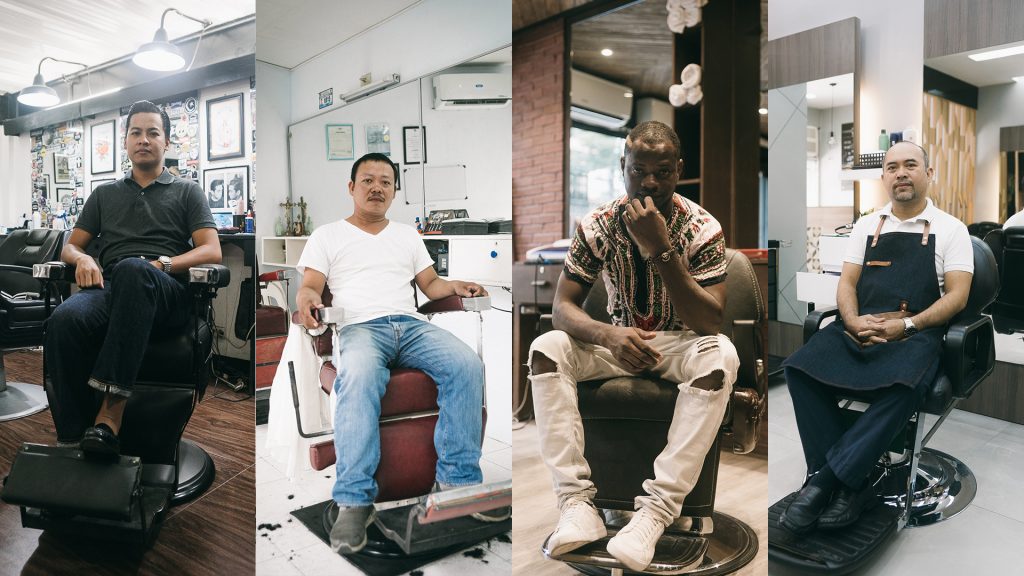
“Huwag kang maniniwala diyan. Kwentong barbero lang ‘yan.“
When we say ‘kwentong barbero’, it usually pertains to hearsay; information perhaps made from imagination and not entirely factual. But have you ever wondered where this really came from? How did we get to the point where the word ‘barbero’ has become synonymous to unsubstantiated small talk?
Barbers are one of the best storytellers. Whether true or not, they never run out of stories to tell. Once you get on that barber’s chair, they’ll ask you a myriad of questions, first of which is the style of your haircut. When that’s out of the way, the conversation creeps in so naturally; “What did you think about the President’s SONA?” was probably the first topic off the top of their heads, if you got a cut this past week.
At this point, we don’t need a magazine, a newspaper, or even our phones. One of the best things about getting your hair cut at a barbershop is the conversation. So we went to a handful of local barbershops to ask some barbers what they think ‘kwentong barbero’ really is, and talk to them about their…well, ‘kwento ng barbero’.
Kuya Ruel of Albin’s Barbershop
3715 Bautista St, Makati City
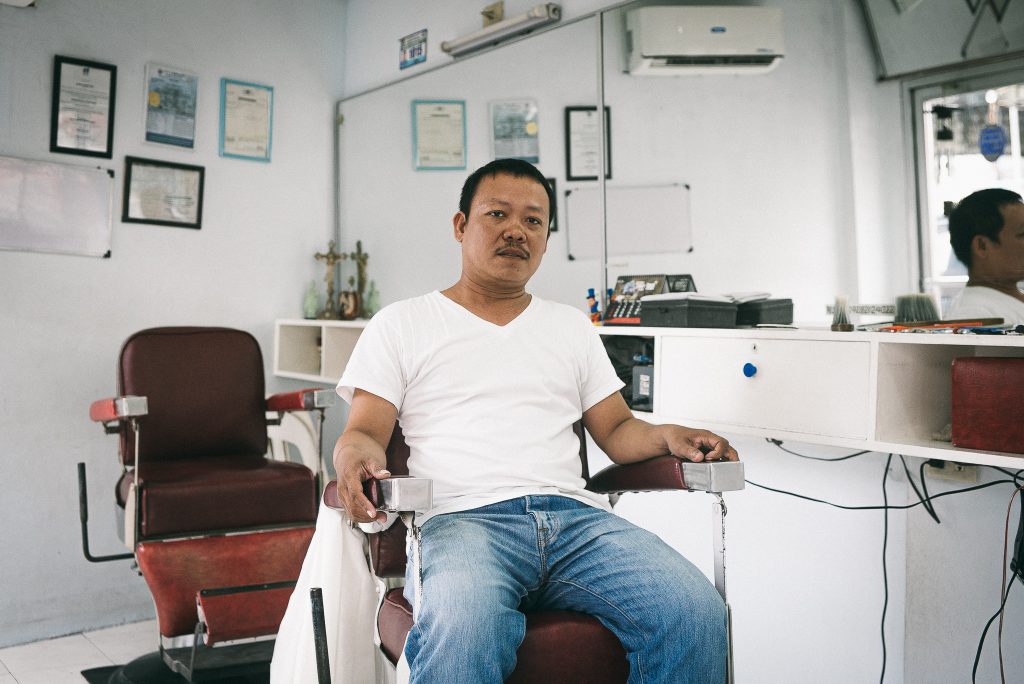
Looking for this man was hard given the fact that the shop doesn’t have a landline number, nor a Facebook or Instagram page as many barbershops do nowadays. We’ve seen Kuya Ruel’s handiwork on the heads of people like Kiko Escora AKA Manila Animal. It just goes to show that not all great haircuts come from fancy shops.
Going on his 21st year as a barber, Kuya Ruel can be found at Albin’s Barbershop along Bautista Street in Makati City. It’s a small, cramped barbershop far from the bustling business district of the city.
How did you become a barber?
Hindi ko naman talaga linya ‘yon. Eh walang mahanap na trabaho kaya ‘yun na lang. Hindi na ‘ko umayaw. Ako na mismo ‘yung sumubok na maging barbero. Naisip ko lang [maging barbero] kasi mahirap ang buhay, kailangan talagang kumita.
What’s your relationship like with your regular customers?
Okay naman, pabalik-balik sila rito. Kahit maliit lang ‘to tapos dalawa-tatlo lang kami dito, bumabalik sila. Kapag pasko may nagbibigay ng mga pagkain, prutas, pati mga lumang bagay. Pero kahit nga matagal na silang nagpapagupit sa akin ‘di ko naman naaalala ‘yung mga pangalan nila. Madalas iisipin [ng ibang tao] na nagiging close ang customer at barbero kaso sa dami nang ginugupitan, kahit pangalan nakakalimutan. Tao lang din kami.
In your own life, have you influenced anyone to learn your craft?
Wala dito; nasa probinsiya, ‘yung isang kakilala namin. Gusto niya pumasok dito, sabi ko mag-practice ka nang mabuti. Iba dito sa Manila, pag may maselan na customer, magagalit ‘yon, di ka na babalikan. Ayun, doon na lang siya sa probinsya, natakot siguro. Pero at least tinuloy niya ang pag gu-gupit.
If you didn’t become a barber, what would you have been?
Maaring driver. Marunong din naman akong magmaneho. Kaso nandito na rin naman ako. Okay na ito.
How would you define ‘kwentong barbero’?
‘Di ako naniniwala doon. Kasi ako barbero ako matagal na, di naman ako nasira. Sabi nila sinungaling daw pag barbero eh hindi naman totoo. Nasa tao na ‘yun, kaming mga barbero di kami nagsi-sinungaling. Ewan ko ba saan nanggaling ‘yun.
Ez Abinal of Heavyhands Barbershop
2nd St, San Miguel, Manila
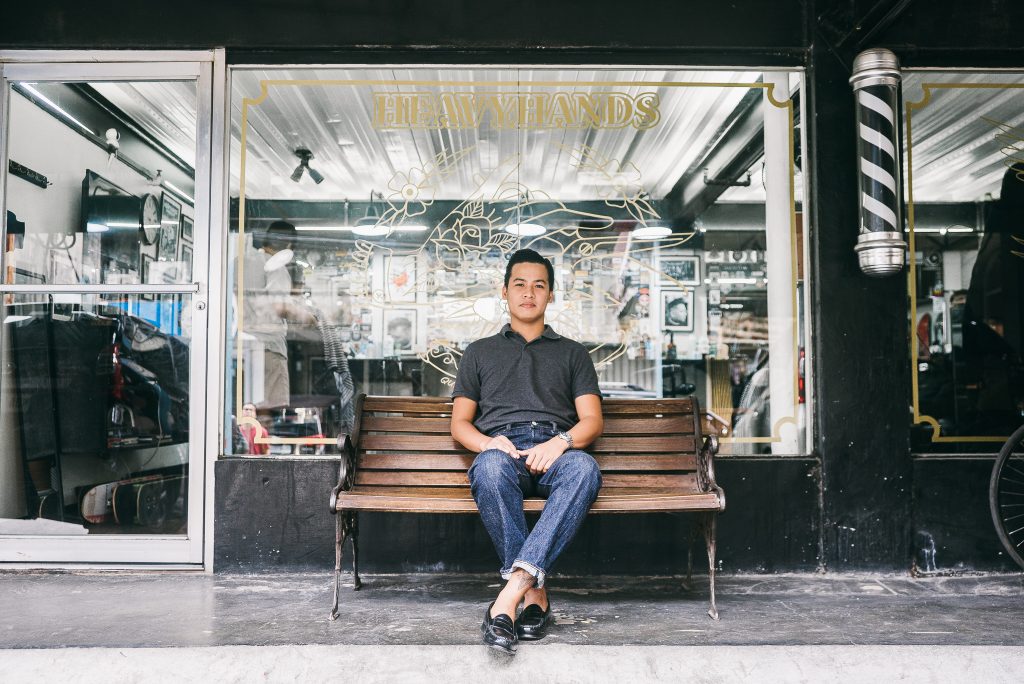
You don’t need a fancy place to get a fancy haircut. The youngest barber in this feature, Ez Abinal is co-owner of Heavyhands Barbershop. After him and co-owner Mak Azores decided to leave the barber collective Slick Barbers Co., they decided to settle in Mendiola and erect Heavyhands Barbershop, a barbershop locally known to serve classic, timeless cuts.
We dropped by Heavyhands to talk to Ez at the strong recommendation of our CLAVEL creative, Rendrick Estrella (Check out his Instagram if you want proof), who gets his hair cut by Ez since before even Heavyhands was born.
How did you become a barber?
Mother ko kasi dati hairdresser sa salon. So may mga gamit kami sa bahay na panggupit tapos pinapakialaman ko. Tapos ginugupitan ko sarili ko, ‘yung friends ko. Hanggang sa trip-trip lang, tapos biglang ginusto ko na siyang gawin. Tapos nag-improve talaga ako noong alam ko na ‘yung gusto kong gupit sa akin.
How does your age become an advantage or a disadvantage in your craft?
Siguro mas nakaka-adapt sa mga bagong trends ng haircuts. Though we focus sa classic, we also do modern haircuts and magaling din kami doon. Downside siguro, kulang ako sa mga kwento; di tulad ng mga mas matanda sa akin.
Have you built any sort of relationship with your regular customers?
Tulad noong kay Rendrick. Since noong estudyante pa sila, pinupuntahan ko sila. Nag se-service ako sa dorm nila, ganoon. Tapos ngayong may sarili nang shop, suporta pa rin–hindi lang sa pagupit pero pati sa trabaho, nadaan pa sa feature diba. (laughs)
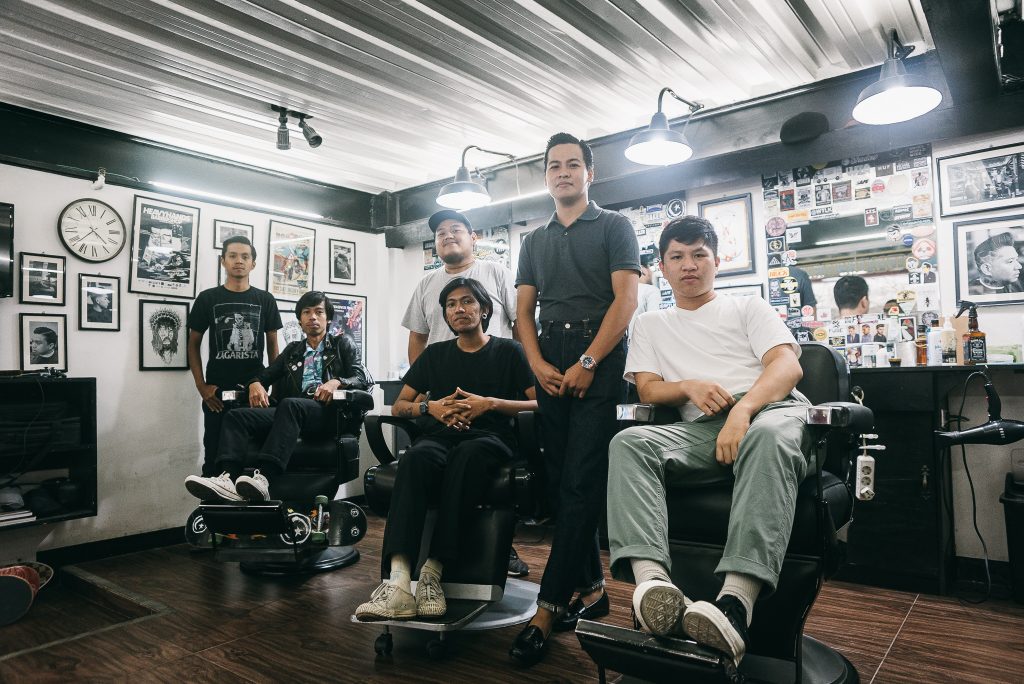
Have you influenced others to learn the craft?
“Ayan, si Roy. Dati student lang ‘yan, naging apprentice barber with zero knowledge. Ngayon full-time na.”
To Roy: What was that like?
Roy: Dati weekend lang. Tapos napansin ko napapadalas ‘yung punta ko kahit weekday pagkatapos ng school. Kahit tambay lang, okay na. Hanggang natuto tapos tuloy-tuloy na.
Ez, if you didn’t become a barber, what do you think you would’ve been?
Psychology ako noong college – ang layo ‘no? Baka HR (Human Resources) siguro kung hindi barbero. Pero masaya ako kung nasaan ako ngayon. Nagagamit ko naman ‘yung psychology sa usapan.
How do you use your background in psychology when dealing with your customers?
Instinct na lang din, siguro sa pag-handle ng client kasi minsan may mga mood ‘yan, and as a barber nagbibigay tayo ng service [which means] dapat composed ka in every bad situation. Customer is always right, ika nga. Although, so far, wala naman akong na-encounter na grabe, kung mayroon man nadadaan naman lahat sa magandang usapan.
How would you define ‘kwentong barbero’?
Dati kasi, parang joke. Ngayon kasi ‘yung kwentong barbero parang ‘yung relationship mo doon sa client. ‘Di na siya parang treated as client, kumbaga kaibigan parang ganoon. Old school na barber siguro nagsabi noon hanggang napasa na nang napasa. Siguro sa daming kwento naisip ng mga tao na ‘yung term na ‘barbero’ gawing salita ng pambobola.
Richmond Amankwah of Nando’s Barbershop
5076 P. Burgos, Makati City

In a city that’s getting more and more diverse, Nando’s Barbershop serves as the very first specialty barbershop for African hair. Owned by former college basketball player Fernando Ngolong, the barbers here have come all the way from Africa to give the shop that authenticity and specialty knowledge that it promises.
We sat down with Richmond Amankwah, a football player of African-descent who came to the Philippines to play football and eventually become a barber at Nando’s. While his dreams of playing under the bright lights of a football field with his name on his back is still very much alive, Richmond works at his own pace, to find where he truly belongs.
How did you first become a barber?
My brother used to be a barber back in Ghana. He was the one who taught me how to cut hair.
What makes this barbershop special to you?
The thing is, the customers are mostly blacks. We know where we come from and we understand each other. If I see you, a black [man], I know that you are my brother. So we know how to become friends. This place makes it a lot easier. It’s very special to me.
Do you have any Filipino regulars who don’t necessarily have the same hair?
Yes, of course. Though not as many as the blacks. Sometimes I talk to them in Tagalog to make them happy. I always say they’re ‘gwapo’ and it makes them laugh.
How do you balance playing football and being a barber?
It’s hard. You have to focus on one thing. Right now I’m just training because I don’t have any team for now. I appreciate Nando because he’s always helping me with being an athlete. If one day I have to leave because of football, he’ll understand and even push me [further]. But right now, I’m focused here in Nando.
There’s a local phrase, ‘kwentong barbero‘, that ultimately means barbers like telling stories, whether they’re true or not. What do you think about it?
I don’t get that yet, but I’m always honest with my customers. If they don’t like my cut we should just talk and fix it. I love talking to my customers. It makes the job easier.
Kuya Jojo of Gents Place
550 Shaw Blvd, Pleasant Hills, Mandaluyong City
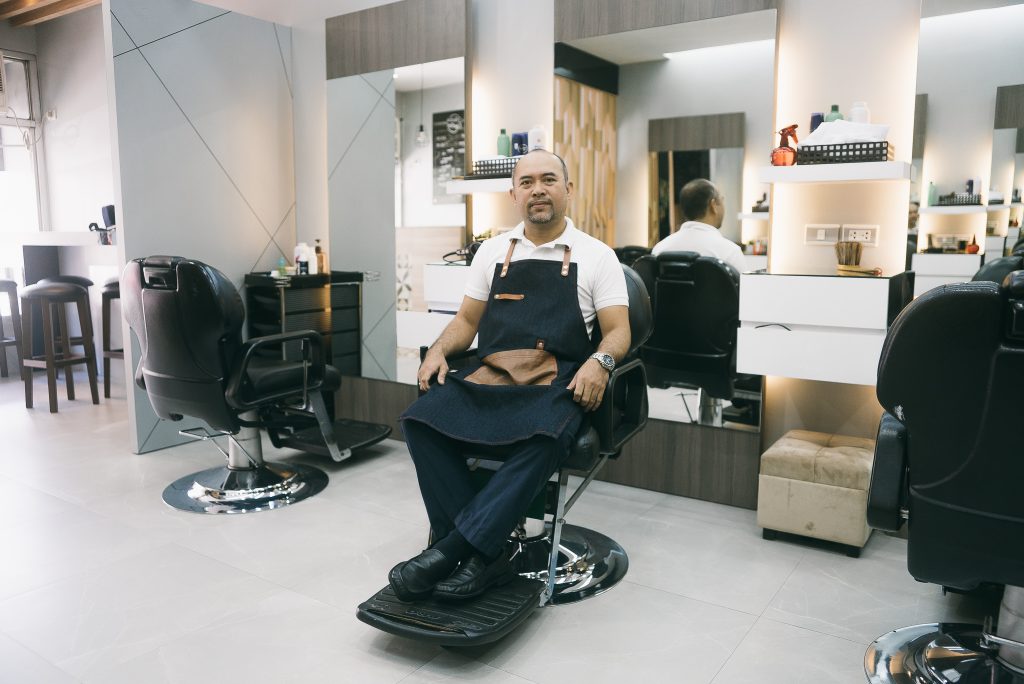
This is the barbershop where I first heard of the term ‘kwentong barbero’. I’ve been getting my hair cut at Gents Place in Shaw Boulevard for the past 15 or so years, with the same barber, Kuya Jojo.
I’ve had many conversations with Kuya Jojo during the times I go, but I’ve never felt any bullshit from his stories. Like the first time I asked him why he was bald, “Nasa lahi namin,” he said. “Hindi mo maiiwasan mawalan ng buhok kapag nasa lahi.” I didn’t believe it of course. What would a 10-year old me have known about genetics?
Fast forward 15 years later, Kuya Jojo is still bald; and I got friends, including myself, who are going through the thinning-hair-and-in-worst-cases-balding phase. “Mas OK na ‘yung kalbo kaysa naman may sakit sa katawan,” he shared with a laugh during my recent cut. So okay, I guess it really could be genetics. And there’s definitely no lie in that.
How did you become a barber?
Hilig ko kasi dati. Tatay ko barbero, tapos kuya ko, tapos sumunod na rin ako. Na-feel ko kasi na magaang trabaho ang pagiging barbero. Hindi pala, lalo na pag marami ang nakapila.
In your time as a barber, were you able to influence anyone to learn the craft?
Meron kaming janitor dito dati. Kapag wala siyang lilinisin, na-nunuod lang siya sa akin. Tapos sinabi ko na tuturuan ko siya. Isang araw, noong nagkulang ‘yung barbero namin, nag-volunteer siya. Alam ko naman na marunong na siya noon kaya pinayagan na namin. Ayun, barbero na siya ngayon. Masaya ako na may na-impluwensiya ako kasi ibig sabihin noon ay naniwala siya sa akin.
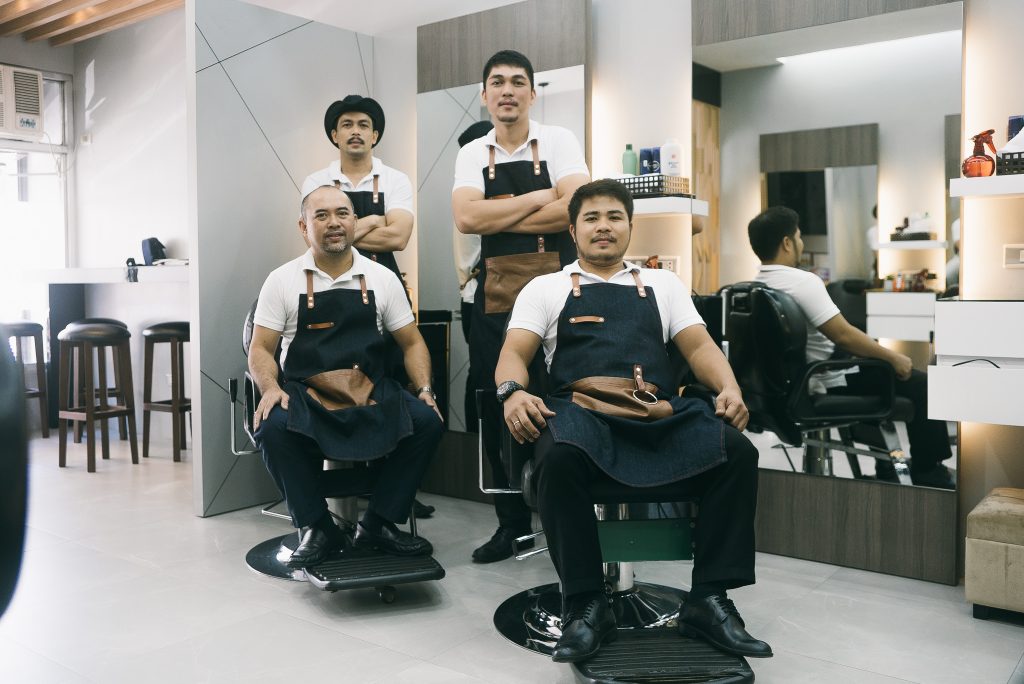
What makes this barbershop special to you?
Halos 17 years na rin kasi ako nandito sa Gents. Dito ko na rin nakilala ‘yung asawa ko, kung saan din kita nakilala. Mababait ang mga tao dito pati mga customer. Hangga’t sa kaya ko pa, dito pa rin ako manggugupit.
How would you define ‘kwentong barbero’?
‘Yun ang kasabihan kasi magaling kaming mag-kwento, bilang barbero. Pero biro-biro lang ‘yun hanggang naging totoo nalang at nagamit na ‘yung salitang ‘barbero’ sa araw-araw na usapan. Kahit ako minsan nagamit ko eh. Kaso di kami nambobola, tamang kwentuhan lang.
Despite local urban belief, maybe barbers aren’t really making things up. Perhaps it’s simply just the passion for storytelling or the connections made through these simple interactions. But we’re not asking you to believe just anything. But just because you heard a story from your local barbershop, doesn’t mean it’s only hearsay. Fact-checking is key, after all.
So guys, give barbers a break.
Photos by Rendrick Estrella
Follow CLAVEL on Facebook and Instagram for news, culture, and more.


